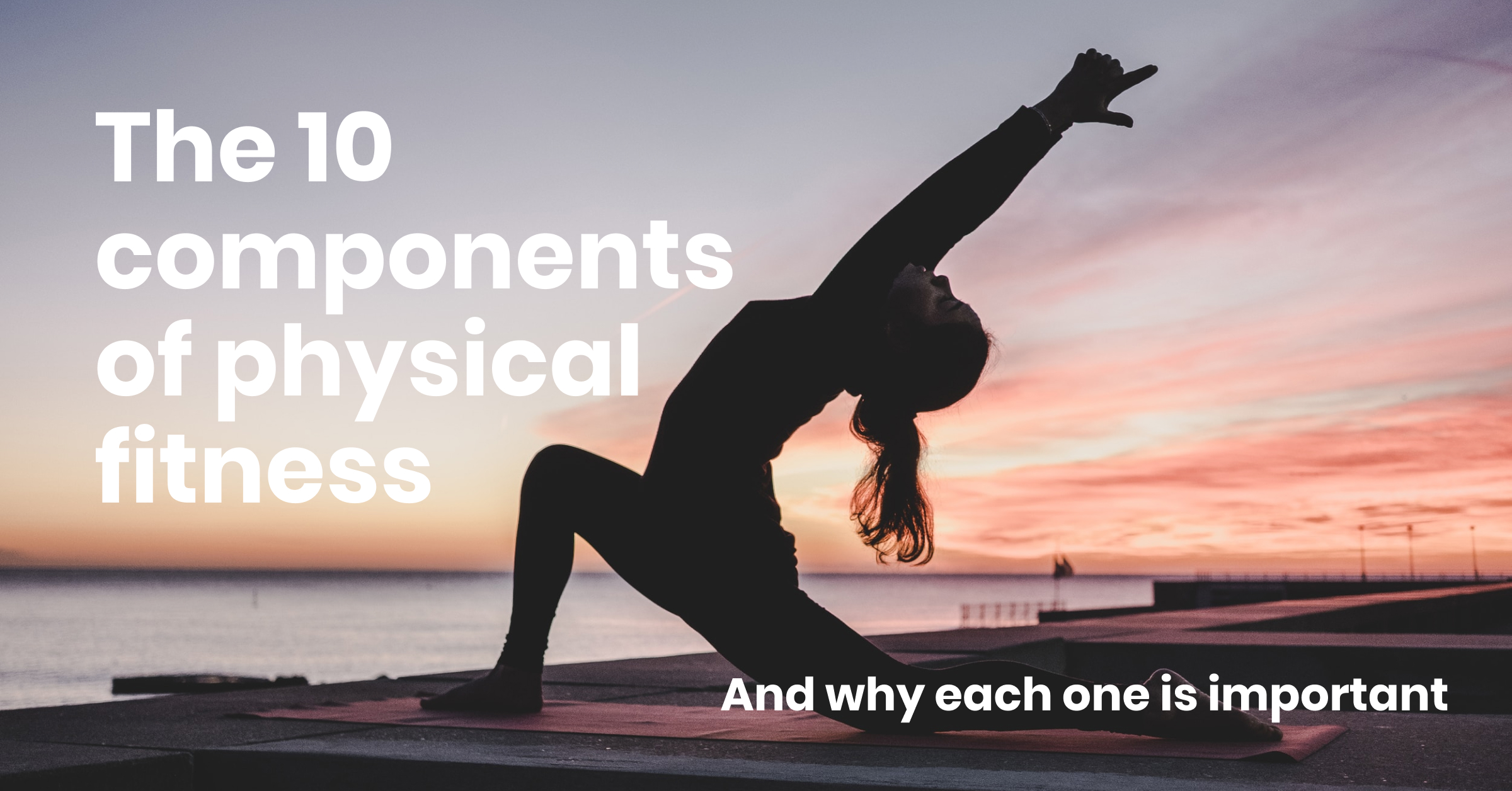
The 10 components of physical fitness and why each one is important
When you think of fitness, what do you think of? An Olympian or a medal winning athlete at the top of their game? A Grand Slam winning tennis player? Maybe someone you know who is able to reach your office on the tenth floor using the stairs, without getting out of breath? Maybe it’s you, who can easily run a sub 30 minute 5km? Or an elderly person perhaps, who is fit and able to do the things we probably wouldn’t expect from someone in their twilight years.
In reality, it’s all of those things, because fitness is defined using many different aspects. Which is why it would be difficult to say who’s fitter – Eddie Hall the strongman, or Mo Farah the marathon runner. Both display obvious physical fitness and are clearly at their peak performance when winning trophies and first place podium positions, yet their physique is completely different.
In order to be physically ‘fit’, we need to train the areas that matter to us. But not only that, to be fit, we need to be fit in all areas – or the so-called ten components of fitness, regardless of whether we’re competing or simply someone who wants to be physically fit. These ten components all contribute to our physical fitness and are further classified into health related and skill related components.
Here’s more on each one and how you could build on yours
The four health related components of fitness
The health and wellness of our body is an important factor in how fit we are and there are four health related aspects to our overall physical fitness. All four can be improved with practice by regular overall exercise.
- Strength
Our strength is a measurement of how much our muscles, or a group of our muscles, can apply force against something giving resistance. Or in other words, our strength is our ability to lift or push a weighted object.
- Muscular endurance / stamina
Muscular endurance describes how long our muscles can repeatedly contract without suffering fatigue. It’s the stamina we have in our muscles in order to keeping working, such as in our arm muscles when lifting weights or in our leg muscles when running. Muscular endurance is also a measure of how well our muscles are able to store, deliver and use energy.
- Flexibility
Flexibility is classified as a measurement of the range of motion we have in each joint. The more flexible the joint, the higher the range of motion. For example, someone practicing yoga frequently might have a higher range of motion, and therefore flexibility, in their hip and ankle joints.
- Cardiovascular endurance
Muscular endurance refers to the ability of a muscle to work without tiring, and similarly, cardiovascular endurance is the ability to exercise without tiring or feeling fatigue in the lungs and heart. Getting out of puff when performing an exercise to the point of exhaustion where we cannot continue refers to our cardiovascular endurance. The longer our ability to exercise, the higher our cardiovascular endurance.
The six skill related components of fitness
Our skill level in a certain exercise or sport is as important as our health and wellness to our fitness. There are six skill related components to our overall physical fitness and like the health related components, they can all be improved with practice, only in this case, by practicing an absolute, sometimes singular, skill for a specific sport.
- Speed
Speed in relation to our fitness is our ability to move our body, or more specifically, parts of our body, such as our feet, legs or arms, quickly. Speed also refers to how quickly we can put these body parts to work, such as at the beginning of a sprint race.
- Agility
How agile we are, or our agility, is how quickly we can change direction when we’re moving at speed. For example, a tennis player has good agility if they’re able to move around the court quickly, firing back shots from along the baseline and all over their side of the court, when the ball might be coming at them in an unknown direction at speeds of 100mph.
- Reaction time
Perhaps closely related to agility, our reaction time is a measure of the time it takes for us to respond to a stimulus. In the agility example above, it could be the time it takes for us to respond to a drop shot from our opponent that’s going to hit the ground close to the net, whilst we’re standing at the baseline.
- Power
Our power might seem like it’s the same as our strength, but it’s actually a combination of our strength and our speed. In fact, it’s our strength multiplied by our speed which equals our maximum force when performed at speed. Put slightly differently, our power is our ability to perform a strength exercise at speed, such as a shot putter might demonstrate when throwing a heavy shot put that requires strength, at speed.
- Balance
Balance is defined as our ability to control our centre of gravity, and therefore body placement, when on a support base whilst either moving or staying still. An example might be riding a unicycle, performing a one legged yoga move such as the tree pose or performing a handstand.
- Co-ordination
Finally, our co-ordination is our ability to use two or more different body parts at the same time, which then appears as one, synchronised movement. Juggling multiple balls at the same time as playing hopscotch is a perfect example of good co-ordination.
Improving each of the ten components of fitness
If you’re looking to improve your overall fitness, it will pay dividends to consider each of the ten different components so that your body is working in harmony and to it’s absolute best. Here’s an example of an exercise for each which clearly demonstrates the need for a variety of exercise:
- Strength – weightlifting (use a weight that pushes you and makes you struggle to perform the last two reps from each set)
- Muscular endurance / stamina – performing dozens of reps of an exercise, preferably that you enjoy, such as lifting weights or performing squats
- Flexibility – yoga, either at a class or using an online platform or app at home
- Cardiovascular endurance – Fartlek running (a type of running training that mixes up speed and distance) [1]
- Speed – sprint interval training [2]
- Agility – Racquet sports such as tennis or badminton
- Reaction time – boxing or a boxing inspired exercise such as Box Fit [3]
- Power – weightlifting but this time lifting a heavier weight for fewer reps [4]
- Balance – Sprint interval training or yoga
- Co-ordination – have some fun with some trampolining sessions!
References
1. Bacon, A., Carter, R., Ogle, E. and Joyner, M., 2013. VO2max Trainability and High Intensity Interval Training in Humans: A Meta-Analysis. PLoS One, 10(1371) [Accessed 25 October 2021].
2. Koral, J., Oranchuk, D., Herrera, R. and Millet, G., 2018. Six Sessions of Sprint Interval Training Improves Running Performance in Trained Athletes. J Strength Cond Res, 32(3), pp.617-623. [Accessed 25 October 2021].
3. Hukkanen, E. and Häkkinen, K., 2017. Effects of Sparring Load on Reaction Speed and Punch Force During the Precompetition and Competition Periods in Boxing. J Strength Cond Res, 31(6), pp.1563-1568. [Accessed 25 October 2021].
4. Sarabia, J., Moya-Ramon, M., Hernández-Davó, J., Fernandez-Fernandez, J. and Sabido, R., 2017. The effects of training with loads that maximise power output and individualised repetitions vs. traditional power training, PLoS One, 10(137) [Accessed 25 October 2021].


